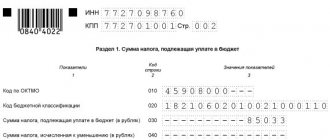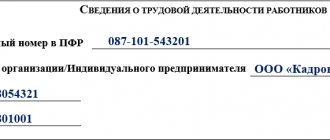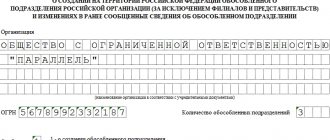Why is the KM-6 form needed?
Certificate form KM-6 is the main reporting document of the cashier. It indicates the revenue received and is handed over to the manager along with the revenue. If the proceeds are given to collectors, then a corresponding note is required in the certificate-report.
In the work of inspection bodies, such certificates play a very important role. It is on their basis that a conclusion is made about the completeness of revenue reflection. In addition, information from the KM-6 certificate is used to fill out a summary report. This report includes data on the status of cash register meters and the income of the enterprise.
Features of the help report
The cashier-operator's certificate-report has several characteristic features:
- the KM-6 form, approved by the State Statistics Committee of the Russian Federation in 1998, is unified;
- errors when filling out, as well as deviations from the generally accepted format, may result in a fine during the work of inspection bodies;
- KM-6 must be filled out daily (or at the end of each shift), and simultaneous filling out of certificates for 2 or more days/shifts is not allowed;
- The document must be submitted simultaneously with the proceeds - either to the chief cashier of the company or to the bank;
- The certificate must be kept for exactly 5 years, after which it loses its value.
Important! Column 4 is filled in only when using outdated cash register equipment. If modern devices have been installed in the organization over the past 12 years, then this section should be left blank.
What to do next with the cashier-operator’s certificate-report.
The “Cashier-Operator Certificate Report” is filled out by the cashier, then transferred to the senior cashier, if there is one, then either to the accountant or the general director. If you are an individual entrepreneur and have three or more persons, it should be taken along with the money to the bank. Moreover, you need to fill out the piece of paper daily, along with. If you did not give it to the bank, the final owner of this happiness is obliged to keep it carefully for 5 years in a row. The obligation to fill out such paper remains questionable. No penalties are provided for its absence, but its absence may serve as an “aggravating circumstance” when attracting an entrepreneur under the Code of Administrative Offenses or under.
Only cash payments and payments by bank cards are entered into this form. Cashless payments do not go through the cash register; therefore, non-cash payments in the KM-6 form are not taken into account.
- (RNDIS, via USB cable)
While on your desktop, right-click on the network icon (highlighted with a red square)
2.A context menu will open where..
Setting up the Federal Tax Service account for VipNet CSP. 1
1.1. Information about the hardware and software that ensures the operation. 2 1.2. Installation "Helper 1.0". ..
At the end of the work shift, the cashier must fill out certain documents, which can, for example, include the cashier-operator’s journal 4. Also, on a daily basis, the cashier must indicate data for each cash register machine in a report on the KM-6 form. We will talk about this document in the article below. As an example, we suggest you download the completed KM-6 report from the link at the end of the article, where you can also download the blank KM-6 form.
Every day at the end of the day, the responsible cashier enters information for each cash register into the cashier-operator’s report, form KM-6. This form is filled out for each cash register, then the final information for all KM-6 reports is compiled into one KM-7 form (). All these forms are submitted to the accounting department along with incoming and outgoing documents before the start of the next work shift.
General filling rules
In order to avoid mistakes when entering information into the KM-6 form, you must follow the general rules:
The first line of the report should contain the name, address (legal or actual - it doesn’t matter, the main thing is that it is the same in all reports) and telephone number of the enterprise. If there is a separate division, then its name must also be indicated.
If the KM-6 form is filled out by an individual entrepreneur, then he must indicate all the necessary information in the same order. This is a common mistake - many individual entrepreneurs believe that they can deviate from the unified form, because they work for themselves. The document must indicate the name, registration number and number of the CCP manufacturer. You must indicate the exact date of completion and certificate number. Revenue must be reported in numerical form and in words. The signature of the author of the certificate report is a required element.
Important! If the proceeds are not handed over to the company’s chief cashier, but to the bank, then this must be noted in the report.
Acquiring
Acquiring is a method of payment for services and goods in which funds are debited from the buyer’s bank card using special equipment - a POS terminal. In other words, this is a cashless payment technology.
In order to use the services of an acquiring bank, an agreement is concluded between the seller company and such an institution. The contract stipulates the following conditions:
- Under what conditions will the equipment be installed and serviced?
- The commission amount is the bank's remuneration.
- For how long will the funds be deposited?
There are three types of acquiring.
Trade. It is used by trading companies to carry out non-cash payments using bank cards between the company and the client in order to pay for goods and services.
In accordance with the concluded agreement, the organization and the acquiring bank have obligations to each other.
At a trading company:
- Creates conditions for the installation and operation of special equipment with a POS payment system (working with payment cards).
- Accept payments using acquiring technology.
- Pay the bank commissions specified in the text of the agreement.
The bank is obliged:
- Install the necessary equipment.
- Conduct training lessons on equipment, technology and card operations.
- Technical support and consultations if necessary.
- Checking the solvency of a client’s card using acquiring technologies.
- Compliance with deadlines for reimbursement of amounts paid using cards.
- Supply of consumables as needed.
Internet acquiring. The principle of operation of the system is the same, however, in settlements of this type there is no direct contact between the seller and the client. Calculations are carried out using specially developed web interfaces. The difference between the Internet and trade acquiring is that an intermediary – a processing company – may appear between the bank and the trade enterprise.
Such organizations collect data about the client’s card and transfer it to the bank; they also ensure the security of Internet transactions and provide information support to clients.
Mobile – is a POS terminal in the form of a card reader, which is located directly on the mobile device. Using special software, you can pay for goods and services by card directly on your smartphone.
Pros:
- Mobility – payment can be made anywhere, regardless of whether you have a PC or laptop, without visiting stores and special points. mPOS is always with the owner.
- Access to a bank account and the ability to manage funds on it within 24 hours.
- Low cost of the device.
- Maximum security of payments.
Acquiring operation scheme:
- Activating the card by swiping it across the terminal.
- Account data is transferred to the processing center.
- The balance on the card is checked.
- If the required amount is available in the account, the funds are written off in favor of the acquiring bank.
- A slip is generated and issued in two copies (a document similar to a check).
- One is signed by the client and given to the seller, and the other is signed by the cashier and given to the client. The signature on the first one is checked against the signature on the card.
- Funds are transferred from the bank account to the current account of the trading organization.
Please note that in addition to the slip, the consumer is also given a cash receipt.
Advantages of using acquiring for small businesses:
- Increased sales volume. According to statistics, the growth is 20-30%. This is due to the fact that cardholders make more expensive purchases, as well as a psychological factor - it is easier to part with non-cash funds than with banknotes.
- The terminal does not accept counterfeit bills, therefore reducing the risk of fraud.
- The acquiring bank often provides preferential rates and lending conditions for its clients.
- Staff training to use POS terminals is free of charge.
Sample certificate. Filling example
To learn more about the KM-6 form, download a free sample. It is in *.doc format and contains the correct form of help without factual errors or inaccuracies. This sample can be used not only to study the features of the certificate report, but also for the specific work of a cashier.
The cashier-operator's certificate-report is divided into 3 parts - line, tabular and final. For convenience, we will divide it into 3 parts and an example of filling it out so that the reader can quickly find exactly what interests him.
So, an example of entering information into the line part of KM-6:
- In the “Organization” field enter the name of the enterprise, its address, and contact telephone number.
- The identification number of the enterprise where the cashier works is entered in the TIN field.
- The “Structural division” field does not need to be touched if this division does not exist in the company.
- In the “Cash register equipment” field, information about cash register models is entered.
- In the “Number” field – the number of the cash register. This information, as well as the information for point 3, can be obtained from the senior cashier or read in the cash register documentation.
- The “Application program” field remains empty if such a program is not used.
- In the “Cashier” field, enter the cashier’s last name and initials. If a certificate is created for 2 or more sectors that have several cashiers, then the field remains empty.
- The number of the current Z-report is entered in the “Change” field. This is not shown in the sample, but it typically starts with the letter "Z". For example, "Z 0040".
Important! Next comes an intermediate field in which you need to enter the serial number of the reference report, the date of preparation, the start time of work on the report and the end time of work. These data cannot be ignored.
The tabular part of the certificate must be filled out as follows:
- Column 4 should also be left blank if modern cash register technology is used (since 2004).
- In column 5 enter the amount at the beginning of the day or shift. This amount can be found in the cashier-operator’s journal, in column 9. It was left there by the cashier who worked the previous shift. This amount is also in the morning X-report, in the GROSS TOTAL line.
- In column 6 enter the amount from the GROSS TOTAL line of the Z-report.
- In column 7 - the amount from the “Shift Total” line of the Z-report. If returns occurred during the day/shift, then you need to enter the shift total minus the returns.
- Column 8 should be left blank if there were no returns. If they were, then you need to enter the amount from the “Returns” line of the Z-report.
- In column 9, the cashier enters his last name.
- The cashier signs in column 10.
The sums of columns 7 and 8 are entered in the “Total” field.
Important! Empty columns can be crossed out. Cashiers often cross them out so that the inspection authorities know for sure that the document is completed completely and the cashier has not forgotten anything.
The final part of the certificate is completed as follows:
- The line “Total...” requires you to enter the proceeds in words.
- The line “Accepted...” should be left blank. It is necessary when a receipt order is issued for a report. In practice this rarely happens.
- The line “Delivered to the bank” contains information about the bank only if the report is handed over to the collector. If the proceeds and certificate are given to the chief cashier, then this line should be left blank.
- There is also no particular point in filling out the “Receipt No.” line, because it refers to the “Accepted...” line.
Next, you need to leave signatures and transcripts of the signatures of the operator, senior cashier and head of the enterprise.
Certificate-report of cashier-operator (form and sample)
In small private companies, employees immediately give the completed form to bank employees. If this does not happen, the management undertakes to keep the certificate for 5 years.
The use of the KM-6 report is widespread not only in the trade sphere, but in any company that maintains accounting records of the income and expense balance. This greatly simplifies the work of the controller during the annual reconciliation of documents.
Today, this certificate is in the form recommended by the Ministry of Finance of the Russian Federation for enterprises. The company may refuse to fill out the KM-6 form, but undertakes to provide an alternative method of reporting to cashiers-operators. This is a necessity prescribed by clause 6.1 of the Standard Rules for the Operation of Cash Register Machines, which was approved by the Ministry of Finance on August 30, 1993 No. 104.
Since the state does not provide for administrative or criminal liability for the absence of the KM-6 form, the tax inspectorate cannot impose a fine on the company. But this does not exempt management and accounting from filling out and submitting an alternative cashier’s report to regulatory authorities. This can be a cash book with all the necessary entries for the receipt and expenditure of material resources. Also, the absence of the KM-6 form filled out by the cashier-operator aggravates the fate of the owner of the enterprise in court if he is brought under Article 120 of the Tax Code of the Russian Federation or under Article 15.1 of the Code of Administrative Offenses.
Common mistakes when filling out
Newbie cashiers sometimes make the ridiculous mistake of entering their own TIN instead of the company’s TIN. Of course this is wrong. The identification number must always belong to the company.
Columns 5 and 6 of the main table should not be confused. Column 5 contains the GROSS TOTAL of the X-report, and column 6 - the GROSS TOTAL of the Z-report. It can't be the other way around. This mistake is often made due to inattention.
Other errors are due to inattention when entering numerical values. For example, you can confuse the date or make a mistake when entering the amount. Such errors are unacceptable, so the cashier should check everything properly.
Important! If there are typos in the KM-6 form itself, then no one will punish the cashier for them. A fine can only be issued for errors in the information that the cashier-operator personally entered.
How to make corrections
Inattention, negligence and lack of experience often cause errors to be made in the certificate. For example, instead of the organization’s TIN, the cashier enters his own code. Often, errors occur in numerical values precisely because of elementary inattention. There should be no errors in the date, amount and other important information.
It is extremely rare, but it still happens, that typos appear on the form itself. Of course, the cashier is not responsible for them, and accordingly, he will not be fined. But if there is false information that the operator entered personally, he may be punished. After filling out, the cashier must check the correctness of the document.
In general, the law allows changes to be made to documents that are in paper form. The generally accepted rule for correcting errors in official documents should be applied here. Thus, incorrect information is crossed out with one line. The required information is indicated at the top. The originator must certify such correction with his signature. It is also necessary to indicate exactly when these adjustments were made. Although practice shows that when several errors are detected, many transaction operators simply use a new form.
Shelf life
This certificate-report refers to primary documentation. It is documentary evidence of calculations made using cash registers. When an organization carries out inspections, regulatory authorities require that a certificate from the cashier-operator be presented. Accordingly, these certificates must be stored at the enterprise in accordance with the rules for storing primary documentation, i.e. within five years. After this period, the certificate is considered invalid and must be disposed of.








